January 11, 2022
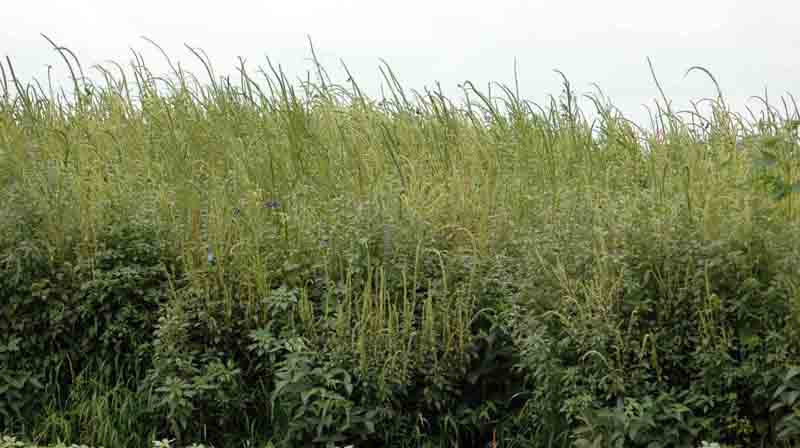
Palmer amaranth arrived around five years ago Western Nebraska, and it has become more common in the region. Palmer amaranth interference has shown to severely reduce yield of major row crops.
For instance, season-long interference of Palmer amaranth reduced soybean yield by 68% at a density of 10 plants per yard of row, corn yield by 91% at a density of eight plants per yard of row, and peanut yield by 68% at a density of five plants per yard of row (Burke et al. 2007, Klingaman and Oliver 1994, Massinga et al. 2001).
However, Palmer amaranth interference hasn’t previously been studied in dry beans. To provide more information to dry bean growers about the potential impact of uncontrolled Palmer amaranth, studies were conducted in 2020 and 2021 at the Panhandle Research and Extension Center, Scottsbluff, Nebraska, to quantify yield loss and potential seed production of Palmer amaranth when competing with dry beans season-long.
Palmer amaranth densities evaluated were: 0, 0.2, 0.3, 0.5, one and two plants per yard of row (Table 1). These studies were conducted in upright pinto beans at a population of 85,000 plants per acre and a row spacing of 22 inches. Emerging Palmer amaranth plants were tagged with zip ties to identify which plants should be kept to maintain the correct density and all other weeds were removed several times a week by hand-weeding. At the end of the season, dry bean yield, yield components and seed production were measured.
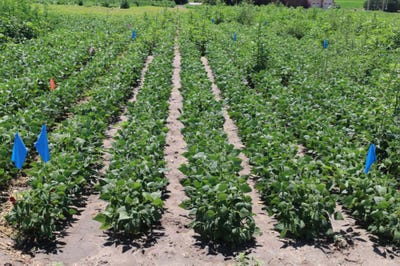
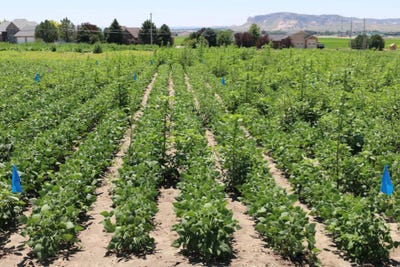
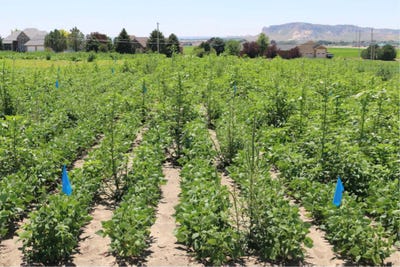
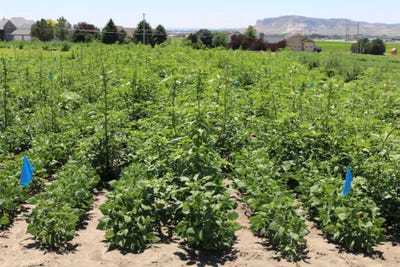
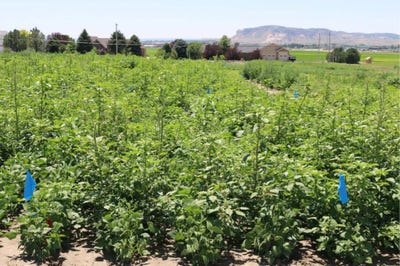
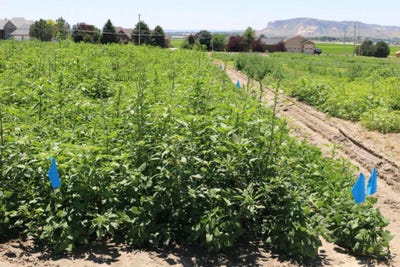
Results
Palmer amaranth was able to reduce dry bean yield by 77% at the highest density evaluated (two plants per yard of row) (Figure 1). A 5% yield loss, a level where a dry bean grower will start to notice decreasing yields, was estimated to occur at only one Palmer amaranth plant per 50 yards or four Palmer amaranth plants per 1,000 ft2. Dry bean plants are more sensitive to Palmer amaranth interference than corn, soybean or peanut as higher Palmer amaranth densities were necessary to severely reduce corn, soybean and peanut yield compared to dry bean.

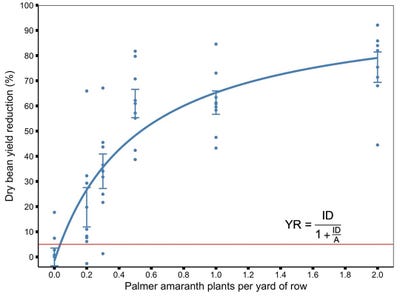
Dry bean yield components were negatively impacted by season-long Palmer amaranth interference (Figure 2). The number of pods per plant were reduced 69% when dry bean plants competed with Palmer amaranth at a density of two plants per yard of row. The number of seeds per pod were reduced 16% as Palmer amaranth density increased to two plants per yard of row. Hundred-seed weight was reduced as 18% as Palmer amaranth density increased to two plants per yard of row.
Dry bean yield reduction was attributed to a reduction in the number of pods per plant as density of Palmer amaranth increased.
The highest Palmer amaranth seed production per plant was found at the lowest density evaluated — 0.2 plants per yard of row — and this seed production started to decrease as Palmer amaranth density increased (Figure 3). Regardless of the density level of Palmer amaranth, seed production was excessively high — a single female Palmer amaranth plant was able to produce from 91,000 to 376,000 seeds.
If only 1% of Palmer amaranth seed germinates, the next growing season around 910 to 3,760 plants will emerge for every Palmer amaranth plant left uncontrolled.
Weed Management Implications
Given that there are limited POST herbicides options in dry bean in Nebraska, effective weed management approaches must be applied to manage Palmer amaranth and avoid yield losses and seed set in the soil. Sequential PRE fb POST applications of Outlook® have shown to effectively control Palmer amaranth, which also allow growers to rotate to corn the next year. Rotation to corn is key to effective weed management as large in stature crops are more competitive against Palmer amaranth and the herbicide options are more diverse to control herbicide-resistant biotypes of Palmer amaranth (Mahoney et al. 2021). A “zero-tolerance” approach to weed management is encouraged as a single Palmer amaranth plant can dramatically increase seed in the soil seedbank.
Future Research
Planning is underway for the 2022 research season. New herbicides for use in dry beans, including pre-crop emergence, post-crop emergence and layby options will be tested, along with on-farm Palmer amaranth control trials. If you are a grower interested in conducting on-farm weed control trials in dry bean, reach out to Nevin Lawrence for more information.
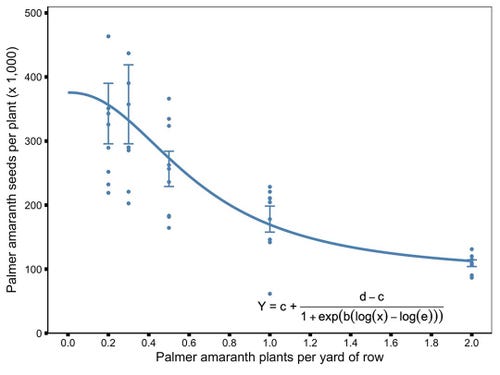
Source: University of Nebraska-Lincoln which is solely responsible for the information provided and is wholly owned by the source. Informa Business Media and all its subsidiaries are not responsible for any of the content contained in this information asset.
Read more about:
WeedsYou May Also Like




